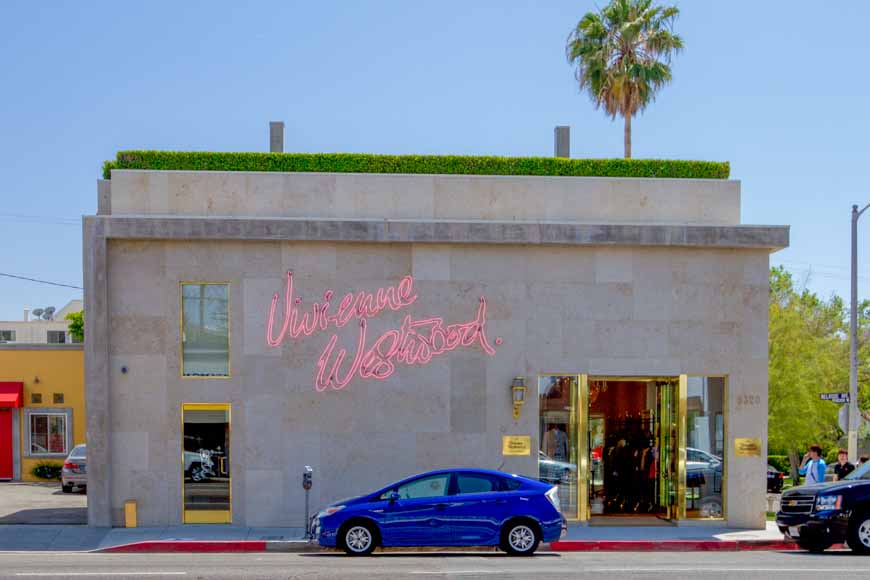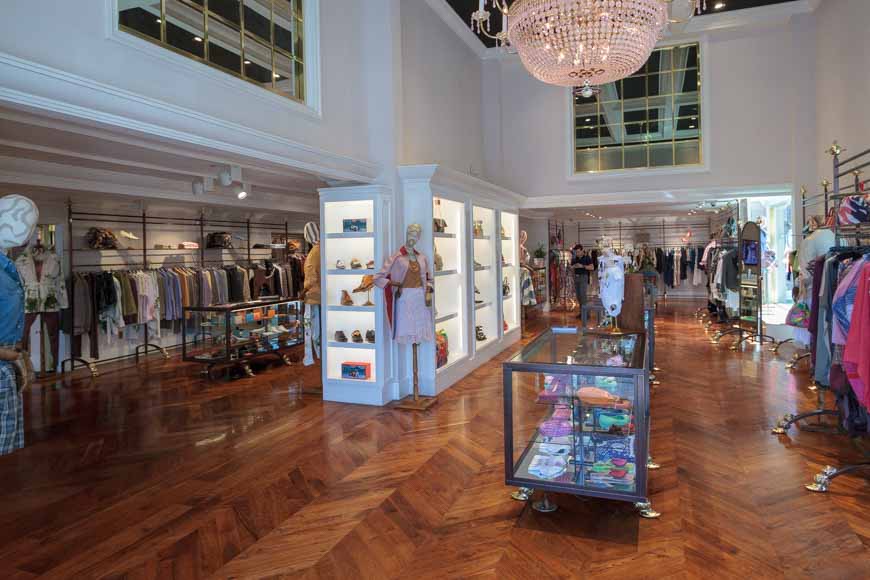Vivienne Westwood
8320 Melrose Avenue
Los Angeles, CA 90069
(323) 782-6822
Monday to Saturday 11-7
Sunday 12-6
1971 – 1980
The hippie movement was still the fashion look of late 1960s London, but this did not inspire Vivienne Westwood and Malcolm McLaren, they were more interested in rebellion and in particular 1950s clothing, music and memorabilia. Vivienne began by making Teddy Boy clothes for McLaren and in 1971 they opened Let it Rock at 430 Kings Road.
By 1972 the designer’s interests had turned to biker clothing, zips and leather. The shop was re-branded with a skull and crossbones and renamed Too Fast to Live, Too Young to Die. Westwood and McLaren began to design t-shirts with provocative messages leading to their prosecution under the obscenity laws; their reaction was to re-brand the shop once again and produce even more hard core images. By 1974 the shop had been renamed Sex, a shop ‘unlike anything else going on in England at the time’ with the slogan ‘rubberwear for the office’.
In 1976 the Sex Pistol’s God Save the Queen, managed by McLaren, went to number one and was refused air time by the BBC. The shop reopened as Seditionaires transforming the straps and zips of obscure sexual fetishism into fashion and inspiring a D.I.Y. aesthetic. The media called it ‘Punk Rock’.
The collapse of the Sex Pistols and the absorption of Punk into the mainstream left Westwood disenchanted. In 1980 the shop was refitted and renamed Worlds End, the name still in use today.
1981-1987
The Pirate Collection of 1981 was Westwood and McLaren’s first catwalk show. This offered a romantic look which burst onto the London fashion scene and ensured this collection’s place in history.
1988 – 1992
During this period Vivienne’s heros changed from punks and ragamuffins to ‘Tatler’ girls wearing clothes that parodied the upper class. A chance encounter inspired one of her most important and influential collections, the Harris Tweed collection of Autumn/Winter 1987.
“My whole idea for this collection was stolen from a little girl I saw on the tube one day. She couldn’t have been more than 14. She had a little plaited bun, a Harris Tweed jacket and a bag with a pair of ballet shoes in it. She looked so cool and composed standing there.”
2000 – present
Beginning to put historicism to one side, Westwood returned to a more asexual cut, exploring the natural dynamic of the fabric by treating it like a living mass.




